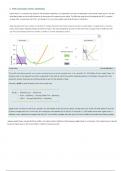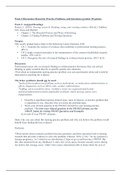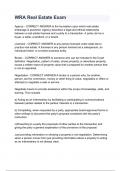1. Profit maximization and loss minimization
Lagatt Green is a monopoly beer producer and distributor operating in the hypothetical economy of Lightington. Assume that Lagatt Green is not able
price discriminate, and so it sells its beer to all customers at the same price per bottle. The following graph al cost (MC), marginal
revenue (MR), average total cost (ATC), and demand (D) curves that Lagatt Green faces for beerin Lig!
Place the black point (plus symbol) on the graph to indicate the profit-maximizing price and quantity for Lagatt Green. If Lagatt Green is making
profit, use the green rectangle (triangle symbols) to shade in the area representing its profit. On the other hand, if Lagatt Green is suffering a loss,
use the purple rectangle (diamond symbols) to shade in the arez representing its foss.
Your Answer Correct Answer
00
250
Monopoly Outcome
300
-,
lars per battle)
250 Profit
200 - -
Close Explanation ~
s
g
g
‘The profit-maximizing quantity occurs where marginal revenue equals marginal cost, or at a quantity of 1,000 bottles of beer. Lagatt Green will
charge a price on the demand curve that corresponds to the p it at which the quantity demanded equals 1,000 bottles, because thi s the
maximum amount consumers are willing and able to pay for this quantity of beer.
Generally, profit is equal to total revenue minus total cost:
Profit = Total Revenue — Total Cost
Price x Quantity — Average Total Cost x Quantity
= (Price — Average Total Cost) x Quantity
Lagatt Green will make 2 profit if at quantity of 1,000 bottles of beer the price is above average total cost, and it will suffer losses if the price
is below average total cost. In this case, the rectangular area between $2.00 and $2.75 and over to 1,000 bottles shows that Lagatt Green is
suffering a foss, because the average total cost ($2.75 per bottle) is greater than the price ($2.00 per bottle) at the profit-maximizing quantity.
uppose Lagatt Green charges $2.00 per bottle. Your study partner Jabrill says that because Lagatt Green is a monopoly with market power, it should
harge the higher price of $2.25 per bottle in order to increase its profit.
, Complete the following table to determine whether Jabrill s correct.
price Quantity Demanded Total Revenue Total Cost profit
(Dollars per bottle) (cans) (Dollars) (Dollars) (Dollars)
2.00 1,000 v [[200000 Jv 275000 v [ 75000
225 750 Vv 168750 |V 2,625.00 v 93750 [V
Points: mm—1/1
Given the earlier information, Jabrill is not_’ correct in his assertion that Lagatt Green should charge $2.25 per bottle.
Points: mm—1/1
Explanation: Close Explanation ~
If Lagatt Green charges $2.00 per bottle of beer, the quantity demanded is 1,000 bottles, as given by the market demand curve. Profit is equal
to total revenue minus total cost. So you can compute profit at this quantity in the following way:
Profit — Total Revenue — Total Cost
Price x Quantity — Average Total Cost x Quantity
= $2.00 per bottle x 1,000 bottles — $2.75 per bottle x 1,000 bottles
$2,000.00 - $2,750.00
~$750.00
However, if Lagatt Green charges $2.25 per bottle of beer, then quantity demanded is only 750 bottles, as given by the market demand curve.
At this quantity, total revenue is $1,687.50, and total cost is $2,625.00. This results in a loss of $937.50 compared ith a loss of $750.00 when
producing 1,000 bottles and charging $2.00. Therefore, the losses suffered are greaterif Lagatt Green chooses to sell a bottle of beer at $2.25
rather than $2.00, so Jabrill is incorrect.
suppose that a technological innovation decreases Lagatt Green’s costs so that it now faces the marginal cost (MC) and average total cost (ATC) given
»n the following graph. Specifically, the technological innovation causes a decrease in average fixed costs, thereby lowering the ATC curve and moving
he MC curve.
Yace the black point (plus symbol) on the following graph to indicate the profit-maximizing price and quantity for Lagatt Green. If Lagatt Green is
naking a profit, use the green rectangle (triangle symbols) to shade in the area representing its profit. On the other hand, if Lagatt Green is suffering
1 loss, use the purple rectangle (diamond symbols) to shade in the area representing the loss.
, (016 1od siejoq) 3
W00 od S
10%1EI AnBadwo)
samsuyioaio) samsuy inox
©
*U0RRALWOD wioy YNsa M 1843 AIGUEND PUE B0 JBYIEW B3 IEDIPUI 0F YOEID B3 UO (jOGUIAS SNId) JUId YOEIG B3 BEld
“S01AD 10} 31w ApfEaM BUI U} SBAIND (A) PUBLIBP PU (I = S) Alddns 3u3 SARIdSIP Ydelb BUIMOI|o}UL
3o 1341BW OU Sey I0PUSA [ENPIAIPUI DE3 PUE SIzfe} 3dud s
18 SI0pUBA 313 “IAIBW BY) JO BININAS B3 03 BNQ “SOIAD BUIES 33 A[IEDISEq BULIBHO UDBA ‘POOLIOGYBIBU 3L U SIOPUBA OIAD AUBW LM WNLIGHINDS
‘3ARRadwWo3 Uni-5uo] uj Bupesado 5| 133 Iew sil 350ddns “sndwe> o} 350 POOYIOGYBIRU Jendod e Uy SOIAB 1o} HIEW APfE3M 3L J3PISU0D
2010 UONNPAWO? SNSIZA BWENNO AjodOUOH * T
2500 & Buptew 51 us219 Nede ‘Apuenb CuZIIXeW-Jy0id S Je (100 Jd S/°T$) 3oud 33
uewy s53| 51 (3704 130 05°T$) 1503 2303 ADIBAR AU} 3SNEDPG 530G 0SZ'T 0} JaAO PUB G/°T$ PUE 05'T$ USIKID] Ease 3L S| 10Id ‘2101341
M0 13 §£°T$ 51 3Ud BUEZILIXeW-yoid 3y PUE 25q Jo Sa0Q 0SZ'T 51 US2I0 TNEBET J0j AyRUEND BuZWIXeW-Jyoid SyL
+ uopeue(dx3 350 :uopeueidxg
(1880 10 531100 10 SPUBSNOUL) ALILNYND
ov st ot sz 0z
N
s 01 0 0
,
X
2
sso1 o1
w 3g
=l
la
woid 05T §
7 - °
.
‘8woanQ Ajodouow
— P
©






